Natural Methods of Pest Control and Pesticide Alternatives
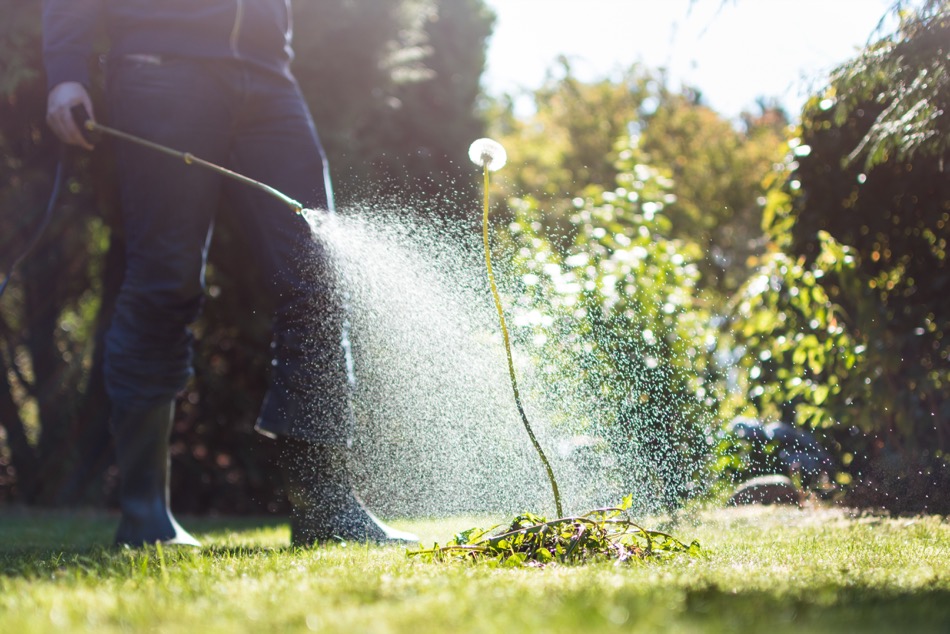 While most people are familiar with pesticides, they may not fully understand how they work. Pesticides contain a mixture of ingredients that, when applied to plants, grass, or parts of a home, kill or repel pests. Common pests on residential properties include insects, rodents, and weeds. Although pesticide products can be very effective at killing species that cause problems for homeowners, they have their own risks as well. Specifically, pesticides can contaminate the local ecosystem, especially as they accumulate. This has the potential to harm or kill humans, pets, birds, and beneficial insects like bees.
While most people are familiar with pesticides, they may not fully understand how they work. Pesticides contain a mixture of ingredients that, when applied to plants, grass, or parts of a home, kill or repel pests. Common pests on residential properties include insects, rodents, and weeds. Although pesticide products can be very effective at killing species that cause problems for homeowners, they have their own risks as well. Specifically, pesticides can contaminate the local ecosystem, especially as they accumulate. This has the potential to harm or kill humans, pets, birds, and beneficial insects like bees.
People prefer to live in a place where they do not have to worry about mosquitoes carrying deadly diseases, or insects that eat their produce. At the same time, they need to protect the environment against the destruction that commercial pesticides can create. There are many natural sources for pest control that can effectively manage insects and weeds without poisoning pets or putting whole species in danger of extinction. This guide helps homeowners understand which natural ingredients they can use to make homemade pesticides and insect repellents. This information can give them the tools they need to provide a safer space at home, without the threat of pests.
Table of Contents
- Ingredients Found in Common Pesticide Products
- How Pesticides Can Be Less Hazardous
- What Are the Impacts of Pesticides on Human Health?
- What Are the Impacts of Pesticides on the Environment?
- Tips for Reducing the Need for Pesticides
- DIY: How to Make Organic Pesticides & Insect Repellents
- How to Apply Pesticides Accurately and Safely
Ingredients Found in Common Pesticide Products
There are dozens of ingredients used in common pesticide products. Manufacturers may put one or more active ingredients in a solution or material that is designed to block or kill weeds, certain kinds of insects, or rodents. A few common active ingredients are:
- 2,4-D
- DEET
- Glyphosate
Since there are so many options, homeowners should check the ingredient list of each product before buying.
Active ingredients work in a few possible ways, depending on the chemical. These include:
- repelling or poisoning pests
- disrupting insects’ ability to reproduce
- making it difficult for weeds to sprout or grow
- breaking down leaves or stems of unwanted plants
Of course, some of the active ingredients have similar effects on pets or humans as they do on weeds or pests. Something that poisons rats can often poison other mammals, even in small quantities. This is why property owners should be very careful in the way they apply pesticides inside or outside the home.
Pesticides usually contain inert ingredients, as well. These components do not actively prevent or kill weeds or pests. Instead, they may help the active ingredients last longer, permeate the space more effectively, or be safer for people to apply. They may contain natural ingredients, like oils or spices, or manmade solvents. According to the EPA, pesticide manufacturers are not required to identify the kinds of inert ingredients they use, just the percentage of the solution made up by those additives.
There are many ways pesticide products can become hazardous to humans. Pesticides may:
- cause harm when they come in contact with skin or eyes
- react with other chemicals
- accumulate in the body of people or animals
- create dust or fumes that spread on the air
People do not need to be completely exposed to the product in order for it to have potential hazards. Peppers, for example, may be safe for humans to touch or consume, but dangerous when they get into someone’s eyes.
How Pesticides Can Be Less Hazardous
Even natural pesticides have the ability to harm pets and residents if they are not applied correctly. People should always make sure that they understand the ingredients of the particular pesticide they want to use and how best to avoid significant consequences from it. As a general rule, homeowners can minimize their risk by engaging in the following practices:
- relying on chemicals that are generally safe for use
- looking for natural alternatives, especially when using around children, pets, or other vulnerable populations
- using safe practices before, during, and after applying the pesticides
- avoiding overuse of pesticides, either in frequency or quantity
Best practices for applying pesticides depend on the product, location, and severity of the problem homeowners are trying to solve. Early detection and removal tends to require less use over time. People who are trying to kill a few weeds in the yard may simply need to wear protective gear and keep children and pets out of the space for a day or two. By comparison, homeowners with a significant termite infestation under the house probably need to consult a professional pest removal service.
What Are the Impacts of Pesticides on Human Health?

Pesticides can affect people’s health in a variety of ways, related to the type of product and the amount of exposure. Generally, someone who encounters the pesticide on a regular basis can have more and worse effects as a result of that exposure. However, a single incident of exposure to a particularly toxic chemical, especially in large quantities, can also cause harm.
It is difficult for experts to determine what level of exposure can be safe for humans. There are so many possible pesticides and it may take several years of exposure before problems arise. In addition, people may experience what is called a combined effect. This means that exposure to multiple environmental factors, or having certain genetic factors, can increase the likelihood that someone will suffer long-term effects. These include:
- endocrine issues, like diabetes or thyroid problems
- reproductive concerns
- cancer
- cognitive decline
- neurological disorders
Some pesticides, like DDT or chlordane, have been discontinued in the U.S. for their contribution to incidence of cancer and other serious conditions. This does not mean that all pesticide products currently on the market are safe. Almost any chemical can cause problems if exposure is high enough.
Pesticide Exposure and Cognitive Decline
Sometimes, people get exposed to a large quantity of pesticide all at once. It is more likely to happen to farmers or others who work with pesticides on a regular basis. Depending on the pesticide, this can be quite dangerous. Researchers have been looking at these high pesticide exposure events (HPEE) as a way to determine whether or not certain pesticides can be harmful in certain quantities.
One study recruited hundreds of people to participate in a series of timed tests of their cognitive ability. About one-quarter of the participants had experienced a HPEE and took longer to respond to a variety of questions. They measured it as a sign of cognitive decline, as if the people who had the HPEE were almost four years older than the other participants.
Researchers had a difficult time drawing concrete conclusions from the study. This is because the respondents had dealt with different kinds of pesticides and had variable periods of time since the exposure. It was difficult to tell if the response was affected by active or inert ingredients. However, the authors noted that this is a significant difference after only one event of heavy exposure.
Pesticide Effects on Women and Children

The potential for children to have negative effects as a result of pesticide exposure starts in utero. Expectant mothers who live near or work in areas where pesticides are used frequently are more likely to accumulate toxins in their bodies. These chemicals can pass to the fetus, which can affect its development. Long-term exposure to pesticides during pregnancy is associated with a higher risk of:
- abnormal growth patterns
- unusual organ function
- cognitive delays
Children can also get exposed to pesticides through a mother’s breastmilk. Breastmilk has a high fat content drawn from the parent’s body. Since the fats of the body preserve elements of environmental exposure, fat is more likely to have potential toxins like pesticides or lead. Any pesticide left in the body’s fat could become a source of exposure for a breastfeeding child. In fact, some known carcinogenic pesticides that have been discontinued may still be present in the fat of adults exposed at the time. This means that someone who was exposed to a pesticide like DDT years ago may still expose an infant through their breastmilk.
Infants and young children are particularly vulnerable to acute poisoning or chronic toxicity as a result of pesticide exposure. This is because their skin is more permeable, allowing higher amounts of the pesticide to absorb more quickly at the point of exposure. It is also related to an infant or child’s greater ratio of skin surface area to body. They are more likely to experience negative effects from poisoning as well. The systems of the body that filter out toxins are fully developed and more effective in adults. This means that children have a harder time getting rid of it, so it can accumulate to a toxic level more quickly.
Pesticide Effects on Pets

Like very young children, pets are more susceptible to exposure of toxic chemicals. An adult who would not imagine licking a dirty floor may track in pesticides from the yard that a cat or dog will accidentally ingest. Many common pesticides also find their way into products that are intended for use directly on pets, for flea treatments or other concerns. With too much exposure or the wrong application, these pesticides can make pets sick or even be fatal.
Homeowners can minimize exposure by taking care when using pesticides around pets, or in areas where pets live and play. They should take the following precautions:
- Try using barrier methods to keep pests out, eliminating the need for chemicals.
- Remove pets from the space during and after pesticide applications.
- Select products that do not resemble food items, which may be eaten by accident.
- Do not mix pesticides with fertilizers, which may be appealing to certain pets.
- Avoid spraying near food or water bowls, beds, or common play areas.
- Remove and clean shoes and clothing worn during application.
- Store pesticides out of reach.
People should also keep in mind that natural insect repellents, such as pepper spray, can occasionally have similar effects on pets. Some products that are safe for one species may be much more harmful to others. Homeowners should perform their own research, tailored to the kinds of pests that they are trying to control.
Pets may display a number of symptoms after poisoning. These include:
- vomiting
- coughing
- drooling
- diarrhea
- excessive tiredness or lethargy
These can be symptomatic of a variety of possible issues, which is why homeowners should pay close attention to their pets’ activities when they are outside. If it seems likely that they ate something they should not have consumed, people can call animal poison control for advice. Having a container of the pesticide available can make assistance more effective.
When to Be Concerned About Pesticide Exposure
Health issues coming from pesticide exposure can be acute or chronic. Acute effects happen immediately or within 48 hours of coming in contact. People may encounter problems like:
- respiratory tract conditions
- headaches or dizziness
- skin irritation
- digestive issues
Chronic effects relate to long-term exposure that accumulates in the body. The longer a person encounters the pesticide, the more it can build up. This can cause serious health problems like cancer or endocrine issues that are difficult to treat or cannot be cured.
People should know when to seek help. For acute poisoning, it may be safer to call poison control immediately for more information. Acute effects are not often fatal but can be serious and cause long-term damage to the skin, lungs or other parts of the body. For concerns about chronic exposure, people should pay attention to their own use of pesticides, as well as that of their neighbors or employers. Gradual signs of sickness, like lethargy or unexpected weight loss, may require complicated testing to determine the source. Getting regular health checkups may help people identify problems early.
What Are the Impacts of Pesticides on the Environment?
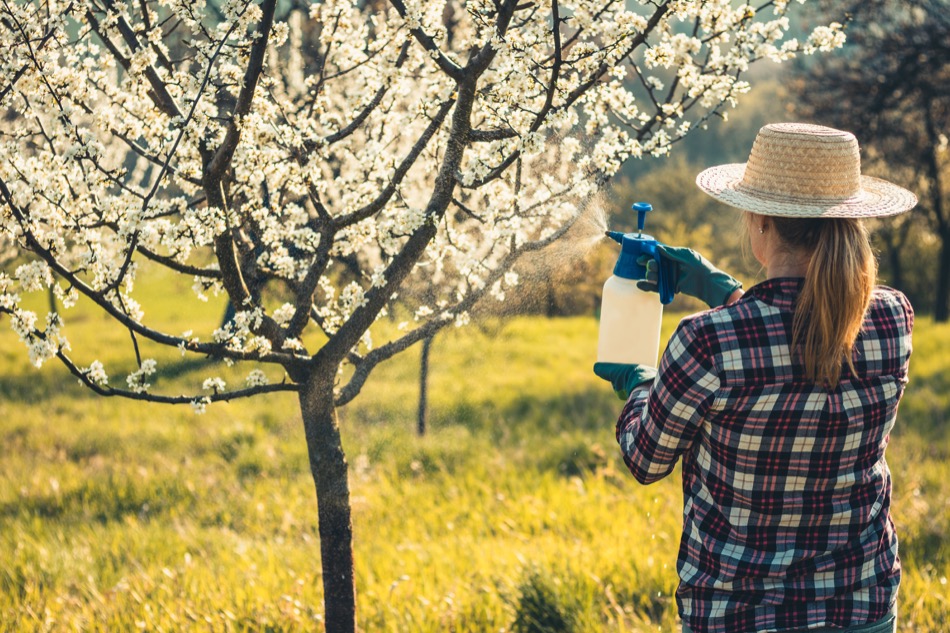
Pesticides affect the environment in a variety of ways. They may kill off insects and animals that perform a function that humans rely on, which may trigger a massive development of other pests that pose a greater threat. Bats often feed on other pests but rarely come into close contact with humans. Insecticides weaken their immune systems, making them more likely to get viruses that are wiping out bat populations.
Pesticides can also change an animal’s biology or behavior. For example, certain chemicals in water can change the sex of amphibians. This affects their reproduction and may be the cause of significant drops in frog populations across the country. It is difficult to tell how adaptable other species can be when a significant part of their ecosystem changes. Large-scale extinction events tend to have rippling effects that last for millions of years.
Waterways and Pesticides
Pesticides that are sprayed into the air or on the ground often make it into nearby waterways. Once a poison reaches the soil or the water supply, it may remain indefinitely. Researchers have found evidence of pesticides in water, river beds and soil decades after application. This can significantly damage the ecosystem of the area in ways that people might not imagine. In particular, pesticides in water affect communities of fish and birds. It is not simply a matter of protecting threatened species from extinction. In many cases, when humans take an animal out of the food chain, they make life more dangerous for themselves.
The pesticides can harm animals through exposure or by threatening their natural environment. Certain kinds of fish are susceptible to pesticides. If they are eaten by birds or other predators, they may contaminate those populations as well. The damage spreads up to the food chain, which means that it can also affect humans who eat those predators.
Humans have many pests that pose danger to them, so they try to handle populations through barriers and pesticides. Sometimes this makes the problem worse. For example, mosquitoes develop on or near water sources. They may carry diseases like malaria, West Nile virus, or Zika that can cause significant harm to humans. When people accidentally or intentionally kill animals that regularly eat mosquitoes, they contribute to higher incidence of mosquitoes and mosquito-borne viruses.
Bees and Other Beneficial Insects
Insects are more than pests that sting or bite humans. Many insects perform vital functions worldwide that help humans survive and thrive. For example, honeybees do more work than simply create honey for humans and other animals to consume. As they gather nectar from flowers, they spread pollen, which allows hundreds of species of plants to grow in greater quantities. Without honeybees, about one-third of foods humans rely on for survival could be in jeopardy.
Unfortunately, beneficial insect populations are dropping, largely due to pesticide use. Researchers have noted a significant decline in the number of American honeybees, resulting from immediate pesticide exposure and colony collapse. Colony collapse describes a process in which the worker bees leave the queen, honey, and a few other bees. Without the worker bees, the colony collapses.
This is becoming more frequent since 2006. Losing a hive from winter weather is not terribly uncommon, but is also on the rise. A specific class of pesticide, called neonicotinoids, seems to be a major part of the cause. When combined with the loss of food sources from commercial development and an increase in diseases endemic to certain kinds of insects, certain bee populations may be at serious risk. Beekeepers try to keep their hives in locations away from pesticides, but this is difficult to control. Homeowners who want to assist in improving the problem may want to consider planting bee-friendly flowers and avoid using bee-killing pesticides in their outdoor spaces.
Tips for Reducing the Need for Pesticides
Fortunately, homeowners have a lot of options to reduce their personal use of pesticides. For the yard, people can:
- plant grasses and flowers that are native to the area
- choose species that are hardy and less likely to suffer from insects or other pests
- allow the lawn to grow longer, preventing weeds from flourishing
In many cases, the use of pesticides is a matter of convenience for residents. People who are not harmed by weeds or insects do not necessarily need to poison them away.
Minimizing pest control needs to happen inside the home as well. When the weather turns cold, insects and rodents come inside for warmth. What they find there can encourage or discourage them. Homeowners can avoid making a comfortable space for pests if they:
- inspect the home and property regularly for signs of an infestation and promptly start treatment
- keep food sources inside the home closed tightly in containers animals and insects cannot reach
- address sources of air and water leaks as soon as they become apparent
- avoid leaving standing pools of water
Preventive care makes it harder for infestations to take hold.
Pesticide Alternatives
There are many mechanical alternatives to pesticides that homeowners may want to try before resorting to chemical sprays and repellents. Traps and barriers can be an effective way to cut down on the pest population before it spreads and becomes more difficult to control. Barriers either prevent something from getting in, or make it particularly difficult. For example, homeowners can install a fabric under the soil of a raised garden bed to minimize weeds getting in from underneath. The use of screens in good condition make it harder for insects and rodents to get inside the house. Copper tape around trees or plants makes slugs and snails unable to cross it.
Traps lure insects or rodents into an area that prevents them from leaving. Some people put a food or other attractive element near the trap to bring in the pest. Homeowners should avoid using lures that may also attract small children or pets. The traps may draw the pest into an enclosure that they cannot leave, or contain a sticky surface that holds the insect or rodent in place. Traps tend to be less efficient because they rely on the pest coming into a particular space and may need to replaced one at a time.
DIY: How to Make Organic Pesticides & Insect Repellents
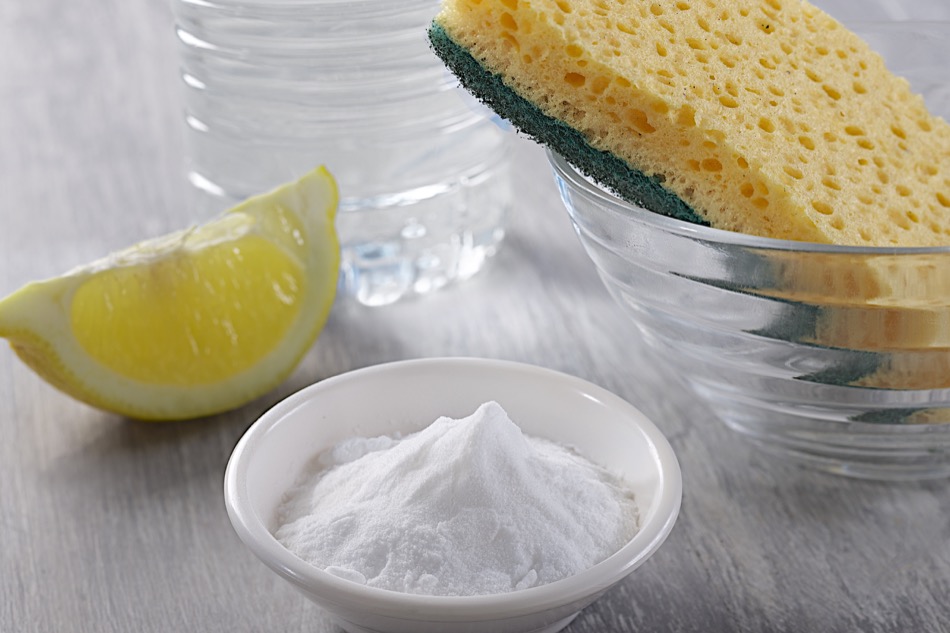
There are dozens of natural products that homeowners can use to make their own pesticides and insect repellents. People can find many of these products simply by looking through their kitchens, bathrooms, or cleaning supply closets. To make homemade, organic pesticides, homeowners need the following tools:
- stove or other way to heat liquids
- distilled water
- sieve or strainer to strain out solid pieces
- cooking oils
- dish soap
- spray bottle
- protective eyewear and gloves, depending on the ingredients
People should make a note of the pests they are trying to control, and use the natural options most likely to be effective. As a general rule, recipes that require cooking organic ingredients may not last very long. This means that people should make a batch that is the size they need for application within a day or two. Dry ingredients that people want to save for next season should be stored in an airtight glass container.
Vegetables
Vegetables and spices have long been used as a deterrent for pests. Homeowners who like to keep a garden may find it difficult to keep insects from eating the leaves of their plants. The pepper spray that people use to prevent attacks from humans and animals can also be used to repel insects. Black pepper, cayenne pepper, and even fresh peppers can block insects or even kill them in the right quantities. People should take care when using pepper spray, however. Touching leaves after using the spray can cause burning, itching, or eye irritation.
Although pepper may be effective on its own, some homeowners might prefer to try onion or garlic as well. These aromatic vegetables can be used fresh, or steeped in a tea. People can blend raw bulbs into a pulp and mix with water to apply to leaves. Some homeowners boil the bulbs until soft in a gallon of water, then allow it to cool. This provides a clear liquid that can be easily sprayed from a spray bottle. Before starting, people should confirm that the plants they intend to spray will not wilt or suffer as a result of the spraying.
Oranges
Citrus fruits like oranges are well-known for their strong scent. This scent has the potential to make it more difficult for insects to find the food they crave. In the right quantities, elements of oranges may also be able to kill certain insects, such as:
- weevils
- house flies
- fire ants
The way that oranges act as an insecticide is through the limonene in the peel. Limonene is popular as a fragrance in beauty aids. It dries quickly and completely when sprayed onto a surface. It is also highly toxic to insects.
Homeowners may use this information to their benefit in keeping pests out of the house or their yards. People with mild pest problems can try boiling the peel in water to create an orange oil solution. They may be able to buy pure orange oil, as well. Since this solution can be toxic to certain kinds of plants, it is important to research which species are tolerant to limonene spray on soil, stems, and leaves. Since the oil also acts as a deterrent to insects, it may also be effective as a preventive to keep the pests from returning.
Cooking Oil
Homeowners often like to cook their seasonal garden produce in cooking oil, but they may be surprised to learn that the same oil has applications in the garden, too. Cooking oils are usually made from the seeds of plants. Seeds are susceptible to insect infestation as surely as plants, and perhaps even more so. They evolved ways of blocking pests that may help people protect other plants. Experts believe that cooking oils made from canola, olives, soybeans, and others may have the ability to stop insects from moving or even breathing. Fortunately, most garden plants will easily tolerate application of the oil.
Anyone who has ever fried a tomato in a delicious oil knows that heat makes oil change quickly. This means that homeowners must apply the oil at the right time to avoid damaging the plant. Specifically, people should avoid spraying cooking oil on plants on hot or muggy days. If they must use the oil during the summer, they should put it on in the evening. Hours before sunlight will allow the oil to absorb. This helps to avoid inadvertently cooking the leaves in the hot sun.
Neem Oil
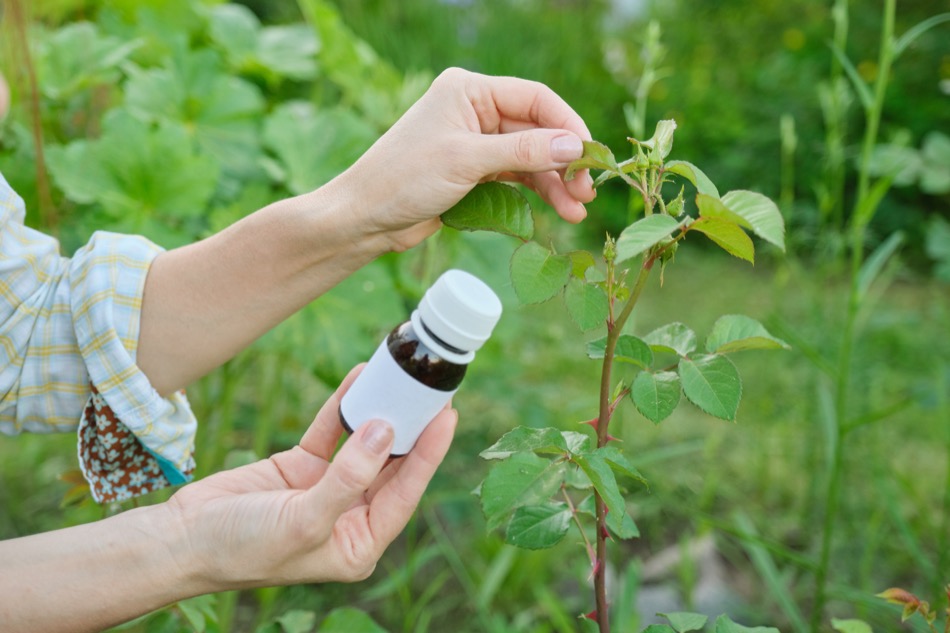
As a tree native to India, neem has a long history of human use in blocking insects. People have been using it for centuries as a way to stop insects from finding food or reproducing. Neem oil is a popular ingredient of many common pesticides. It has a strong odor similar to garlic. Since garlic is also known as an insect repellent and natural pesticide, it makes sense that something that smells the same may have similar properties.
Like other oils, neem oil comes from the seeds of the tree. The seeds themselves can be difficult for people to find outside of regions where it grows naturally. The oil is available for purchase in a pure, cold-pressed format, and many people use it for cooking. However, the application should be taken with care. People who touch undiluted neem oil could develop contact dermatitis. Some studies indicate that neem oil may be harmful to pets, cats in particular. People with house cats may want to use it outside or in places where their pets do not go. It can also pose problems to fish, which means that homeowners should avoid spraying it near water.
Essential Oils
Many people are familiar with the use of essential oils in the cleaning of the home and the body. These oils also have applications to prevent certain kinds of weeds, fungi, and other pests from invading the outdoor space. In particular, eucalyptus and tea tree oils are known for their strong scent and their use in the treatment of common human ailments. Their antimicrobial properties work almost anywhere. The logic behind them is pretty simple. Plants and trees evolved ways to protect them from blight that could wipe out the species. The killing blow comes from the oils.
Essential oils can be extremely powerful in their undiluted form, so people should take care when applying. In most cases, a few drops in a gallon of water should be enough to create a spray that homeowners can put on plants. The powerful scent distracts insects, making it more difficult to find their nests or other insects for mating. Many oils also absorb necessary liquids from insects. A dry area makes it more difficult for slugs, snails, or fungi to grow. When sprayed on larvae, the oils may even dissolve them.
Vinegar
As a highly acidic substance, vinegar has a variety of germ-killing properties. It can also work on insects and weeds. White vinegar is popular for use in cleaning the home, largely because it is inexpensive and effective at dissolving grime. The acid works as an effective repellent. The strong scent detracts ants. When sprayed around doors and windows, it can keep insects from coming indoors to build a home. Apple cider vinegar may also be an effective way to tame house flies and fruit flies, when poured into a shallow dish. The sweet scent draws them in and drowns them. Spraying vinegar on weeds may cause them to wilt.
Homeowners should remember that there are many kinds of vinegar, and some are safer for application than others. Common household white vinegar has an acid content of about 5 percent. This may not be strong enough to kill weeds unless they are little more than seedlings. Stronger vinegars, like industrial vinegar, have a much higher acid content. This is an effective pesticide, but may also kill grass or plants that homeowners would like to keep alive. It can burn if applied directly to the skin or accidentally sprayed into the eyes.
Soap
People who have flowering plants or those with many leaves may encounter periodic problems with insects that like to eat the leaves. Soap can be an effective management technique for these plants. Roses and other bushes often attract aphids, mites, and other species that will chew on the leaves, which can stunt the growth of the plant. These bushes and flowering plants also attract beneficial insects like bees and butterflies. Conscious homeowners may want to try using insecticidal soap as a way to protect their plants without contributing to concerns about species collapse.
There are a variety of insecticidal soaps available for purchase, and homeowners may want to start with these. Homemade versions usually include a small amount of pure dish soap, mixed with a cup of cooking oil and about a gallon of warm water. This solution can be sprayed onto the leaves of plants to repel insects. Like other pesticides containing cooking oil, it needs to be applied outside of the hottest hours of the day. To function as an insecticide, it must be sprayed onto the insects themselves. It does not act as a poison that they can carry back to their nests.
Epsom Salt
Like vinegar, Epsom salt is another product that homeowners might find around the house for effective use in pest control. Epsom salt is a concentrated, crystalline form of magnesium sulfate. It has many beneficial uses for human health, but acts as a toxin for pests. The best way to apply it depends on the kinds of insects that people are trying to eliminate. For example, putting a small amount in a bowl inside the home can effectively target roaches. Experts say that people should be careful in the amount that they use. Since this is a type of salt, putting too much of it in the soil can accidentally contaminate the soil or water supply.
Epsom salt may be particularly useful in the planting stage, when vegetable plants are at their most vulnerable. A thin line of the salt next to the line of seeds can help to block plant bugs or slugs. As slugs or snails crawl over it, the salt dries them out and they may die. Later in the season, homeowners can try mixing a cup of Epsom salt with several gallons of water. The salt solution may be effective against beetles and other insects that might land on the plant and eat the produce.
Chrysanthemums
Chrysanthemums are more than just a lovely, late-summer perennial to put in the garden. The flowers contain pyrethrin, a compound featured prominently in thousands of pesticide products. Derived from certain kinds of chrysanthemum flowers, it acts as a neurotoxin to mosquitoes, flies, moths, and ants. This chemical is popular in pesticide foggers and pet flea sprays because it is not toxic to humans, animals, or birds.
Homeowners have several options to use chrysanthemums as a pesticide or insect repellent. In particular, people should search for the kind of chrysanthemums that look more like daisies. Planting the flowers surrounding vulnerable plants or outdoor living spaces can keep pests from entering. When the flowers bloom and wilt, people can crush the dried heads and sprinkle them around their garden next spring.
Homeowners can also take the heads and boil them in water to make a tea. Once cool, the tea can be sprayed on the plants. They may also choose to buy a product containing pyrethrin. They should keep in mind that manufacturers are not required to list all ingredients. As such, even products marketed as all-natural may contain chemicals that could be toxic.
Diatomaceous Earth
People have found many uses for fossilized creatures, and diatomaceous earth is no exception. This substance looks and feels like chalk, and happens to have insect-killing capabilities. It is highly absorbent, which makes it a popular substance for use in many natural health and beauty regimens. When applied to an insect infestation, experts claim that it will make the pests dehydrated to the point of death. Many people use it to prevent beetles, moths, slugs, and fleas from finding a home in their yards.
Homeowners may be able to find diatomaceous earth at the store, but they should make sure they get the right kind. Some people use it in their swimming pools as a way to filter the water. This product may not be safe to apply to garden plants, especially those that humans will consume. Instead, people should look for food-grade diatomaceous earth. This substance can be put on the leaves or the soil. Homeowners may need to reapply it periodically after rainstorms, or for particularly large infestations. Since it is a powder and not a spray, people may want to use goggles and a face mask to cover their nose and mouth when they spread it.
Tobacco
The nicotine in tobacco that is so addictive to humans is proving effective as a barrier or killer of insects, even those that resist other types of pesticides. Research suggests that nicotine should not be used in your garden when growing for human consumption. Also keep in mind that Nicotine is not permitted as a pest control substance in organic farming on a commercial level. Nicotine is toxic to certain pests, including:
- fungi
- bacteria
- potato beetles
Researchers found that producing a highly concentrated oil from tobacco leaves using high heat around 900 degrees Fahrenheit is most useful as a pesticide.
Homeowners can make their own pesticide from dried tobacco leaves, assuming they have access. People who buy products containing tobacco leaves intended for human consumption should check to see if it contains other ingredients, like flavoring, that may affect the plants. It should not be used on nightshade plants, such as tomatoes, peppers, or potatoes. People can steep the leaves for hours or even a day to create a strong liquid to spray directly on insects. It needs to be mixed with a small amount of dish soap to help the liquid stick to the leaves. The two types of pesticide combined together may be more effective.
Aluminum Foil
Almost no one enjoys walking across aluminum foil, and it turns out insects are no exception. Bugs that eat vegetable plants, like squash vine borers, may lay their eggs on the young sprouts or crawl up later, once the stem is strong. In either case, aluminum foil may act as an inexpensive and non-toxic barrier. Although the foil needs to be placed at the right time and might require a little assistance to keep it in place, it does not leach into the soil or become a poison to beneficial insects or pets.
The best way to use the foil depends on the application. As a general rule, people can wrap a thin layer surrounding the plant as it grows. They can also place sheets of foil around the garden. This makes the surface more difficult for insects to cross. In the case of aphids, the perennial pest of bushes and flowering plants, the foil’s reflective surface makes the leaves appear dangerous and unappealing. Homeowners should avoid covering the plant in foil. It is also useful for reflecting or keeping heat in, which can damage plants during a hot summer.
How to Apply Pesticides Accurately and Safely
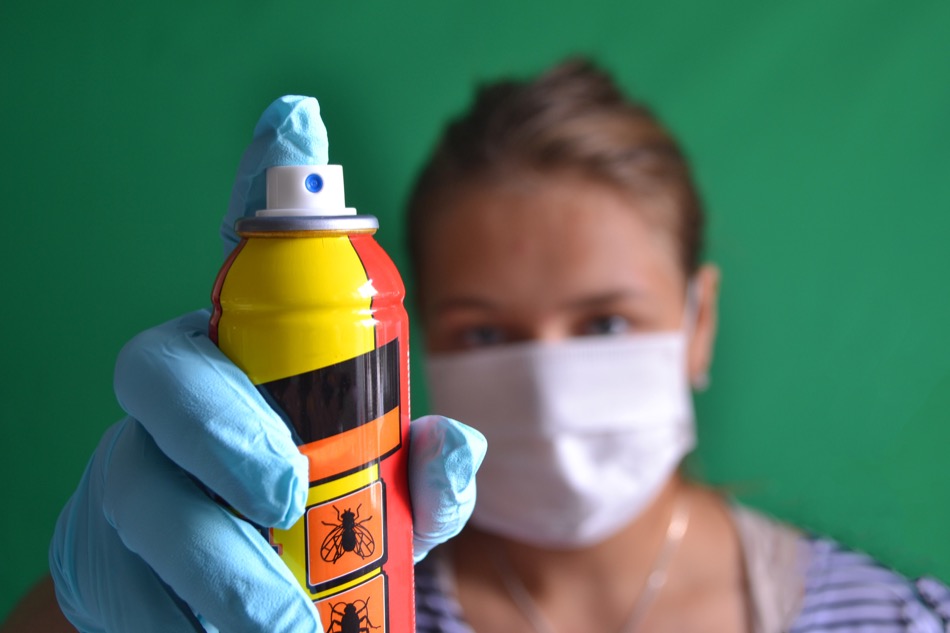
Any application of pesticides can be a problem if people are not adequately prepared. Homeowners can avoid most problems by:
- researching the best products for the type of pest
- using protective gear when mixing and applying the solution
- keeping children and pets away from the areas to be treated
- allowing the solution to dry or absorb before touching it
- washing hands, tools, and equipment fully after application
One of the biggest problems that people face is overuse. Using too much pesticide can accidentally kill plants instead of protecting them. It can also leak into wastewater systems and contaminate soil or the local water supply. Whether homeowners want to use a natural solution they make at home or a conventional product from the store, they should find out how much to use and keep their consumption under that limit.
Natural does not always mean that it is safe for people to apply directly to plants or to their own skin. The chemical compounds that make these ingredients toxic to pests may cause burning, itching, or other irritation. In many cases, people who wish to make these independently will boil them and use the liquid as a spray on plants. Although this is usually the most diluted form, it still may not be safe for all applications.
When people prepare to spray, they should cover up as much as they can. This includes wearing long sleeves and pants, shoes and socks, and protective eyewear and gloves as needed. If applying the solution indoors using a spray, they should cover surfaces like countertops and keep the spray close to the floor or the pests’ point of entry. Homeowners may want to keep children and pets out of that part of the house or yard until the solution is completely dry.
For decades, many people treated pesticides as a necessary evil, something that they had to use in order to have a pest-free life. Over time, experts began to realize that commercial pesticides, especially those coming from manmade sources, can cause more harm than good. The overuse of pesticides worldwide is contributing to a precipitous drop in the population of certain species like bees. People consume pesticides in the food they eat, the water they drink, and simply by living in a populated area. However, an apple laden with pesticides may reside in a human’s fat cells for years. It can continue to affect the soil where it is sprayed for decades.
Awareness can make all the difference. Homeowners need to take care in the kinds of pesticides they use, and the way they use them. Cutting down on consumption can help to undo some of the damage of the past years. Looking for natural alternatives like soap or oils can give people a non-toxic but effective way to keep insects and weeds at bay. Being extra careful does not necessarily mean that people have to enjoy living with mosquitoes. The right natural solution can help people stay healthy without putting everyone at risk.
